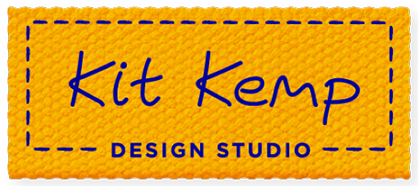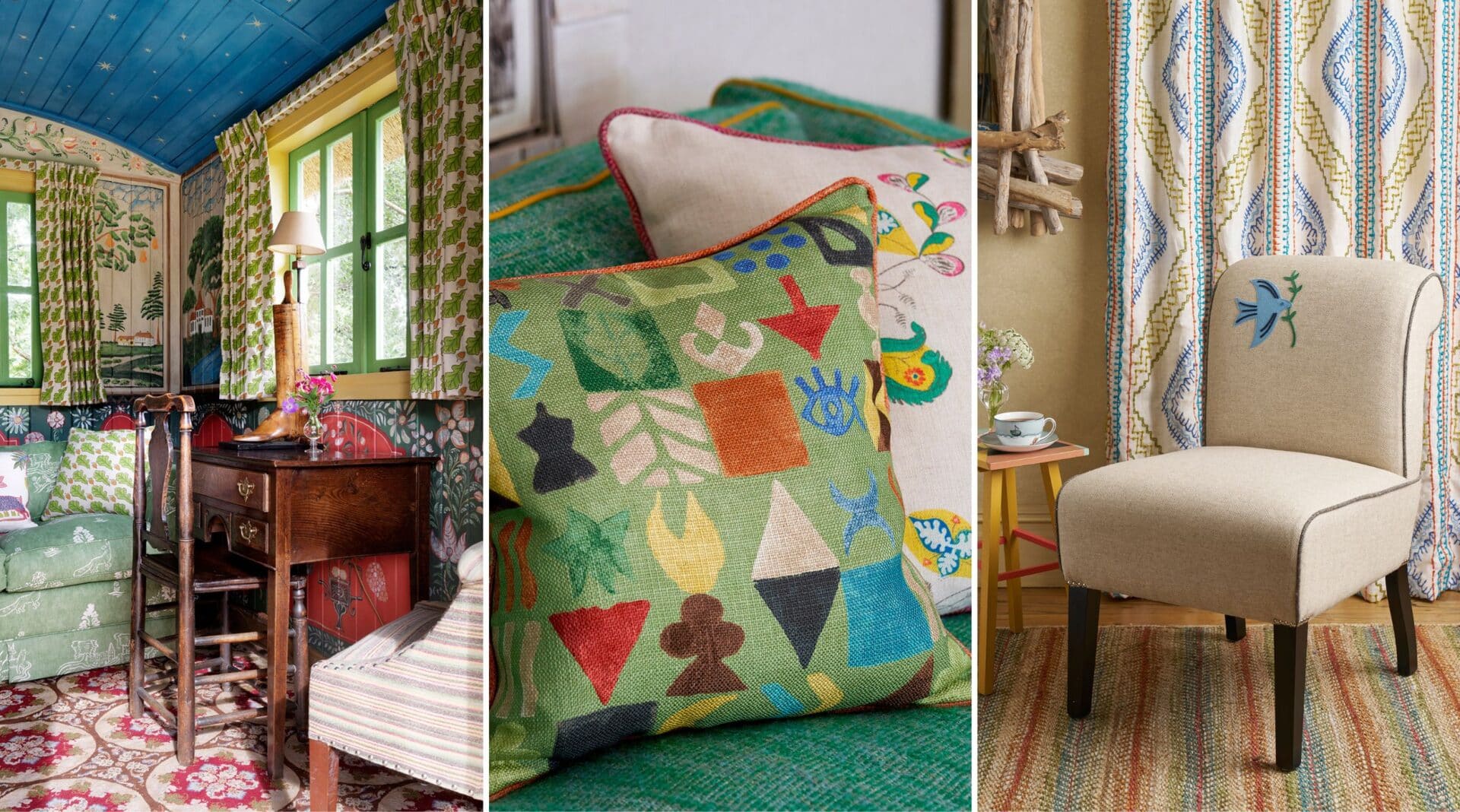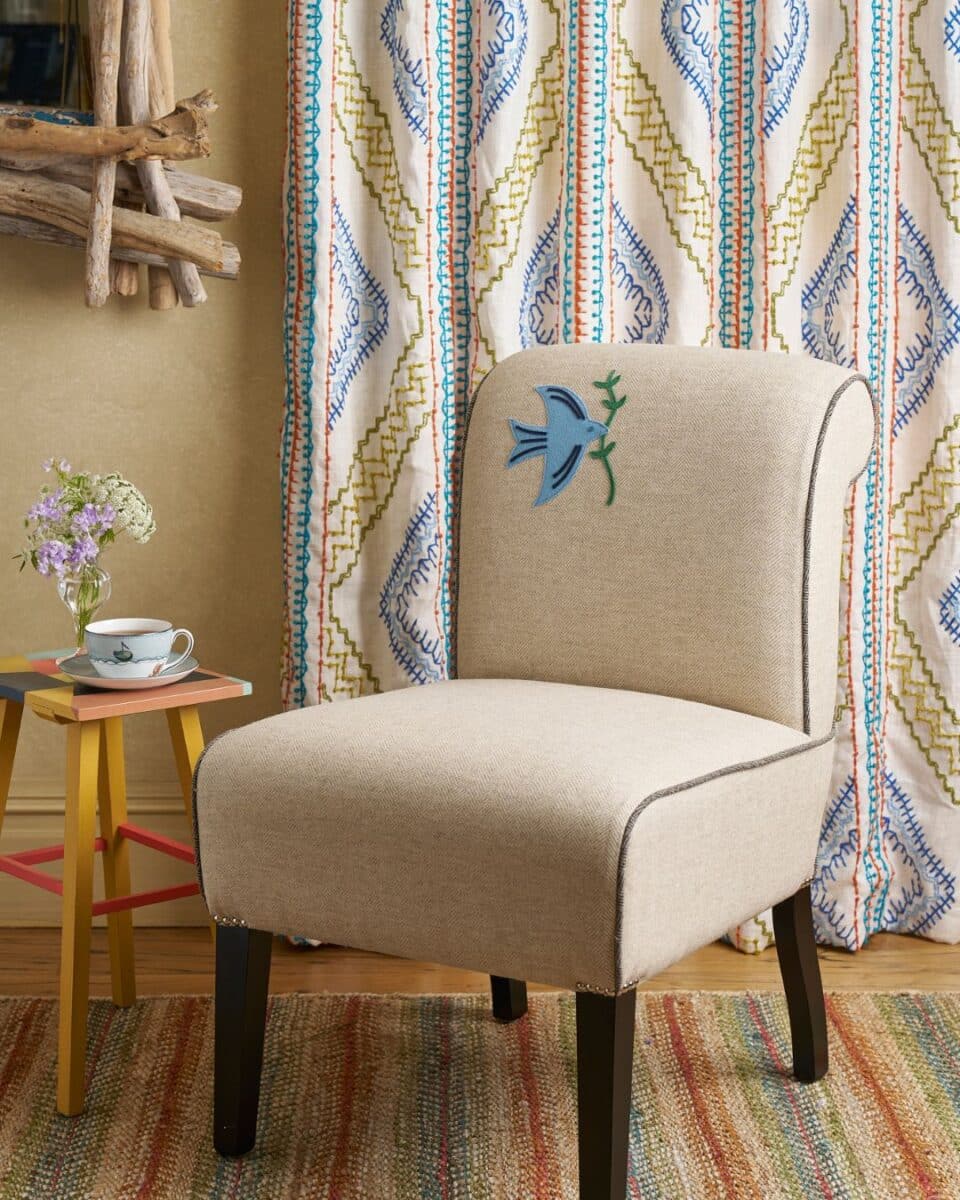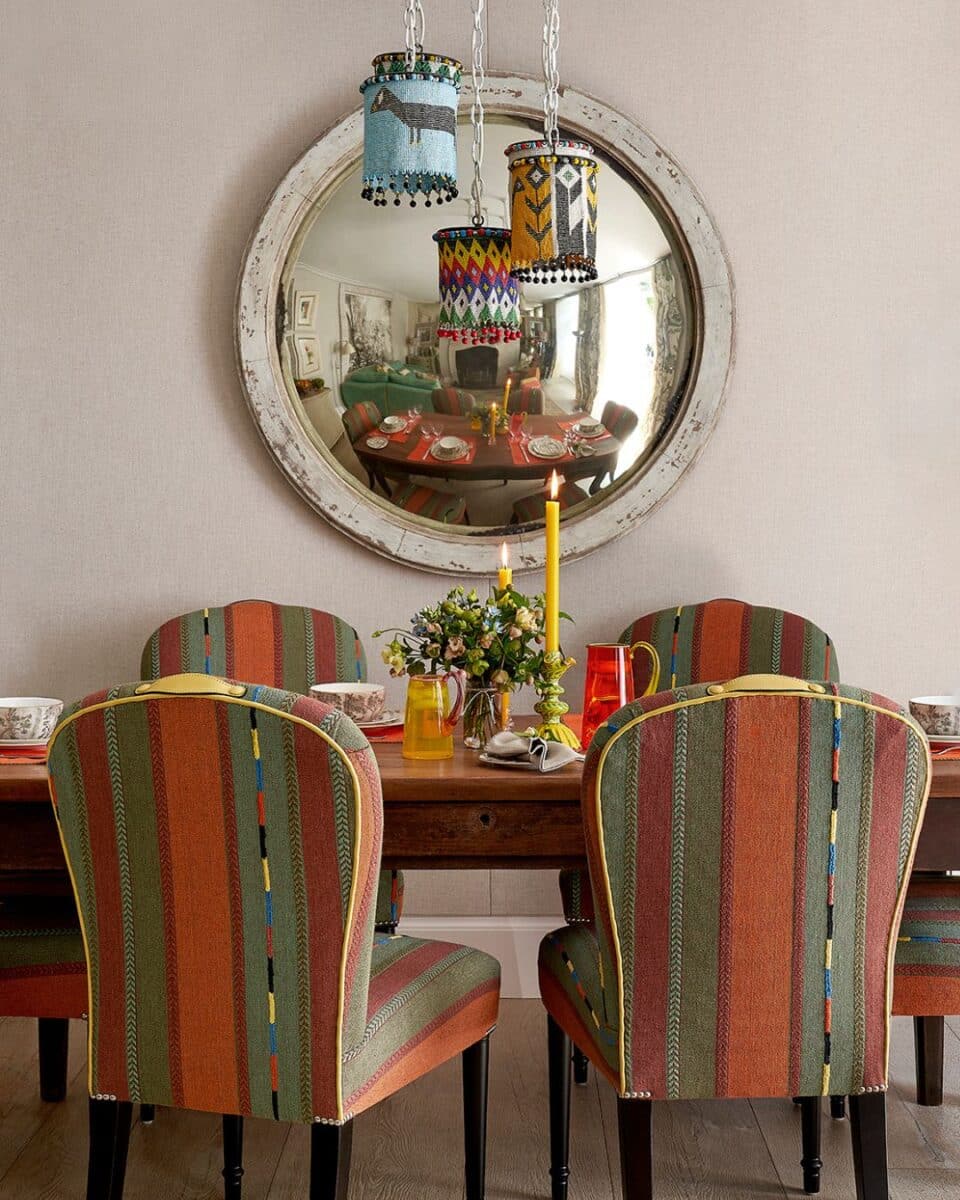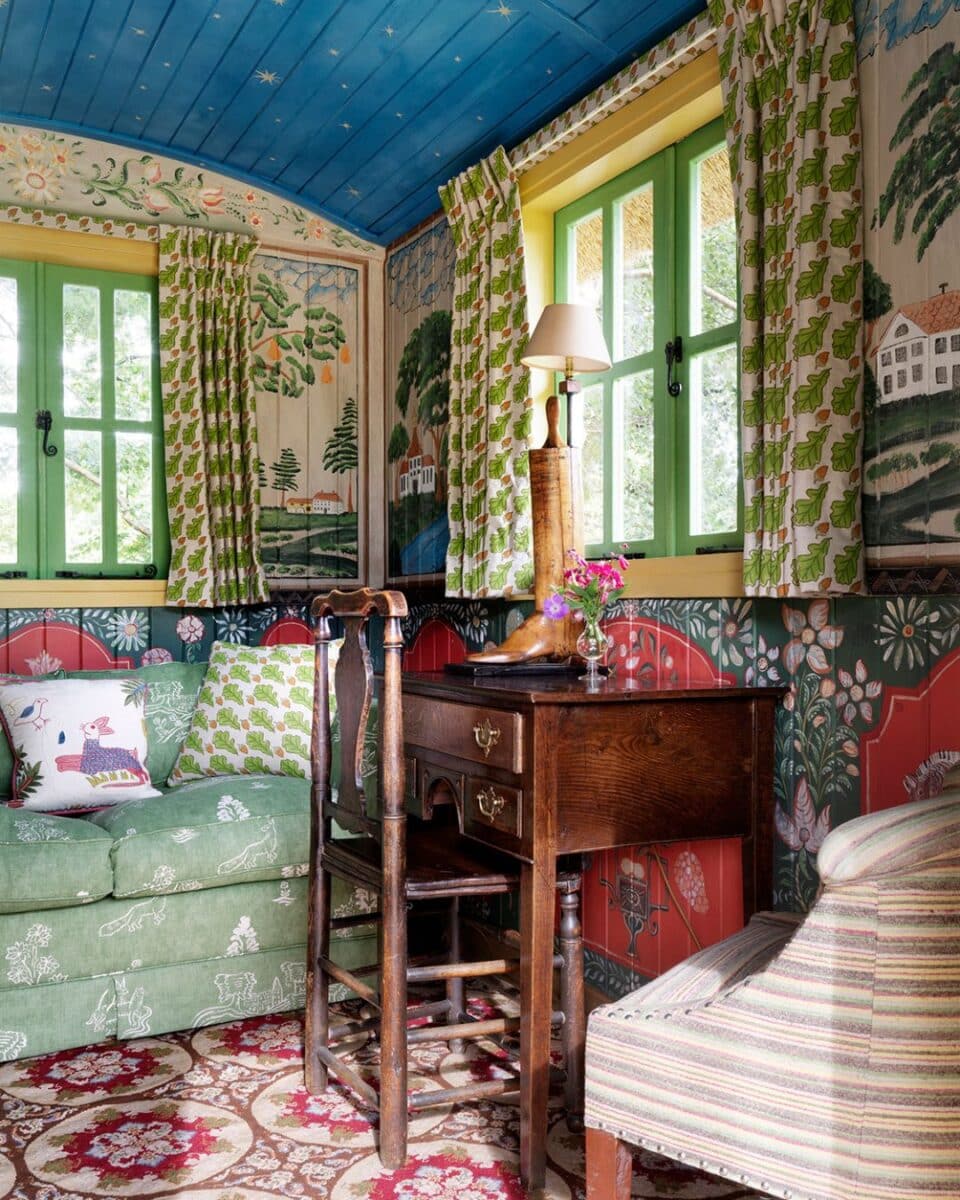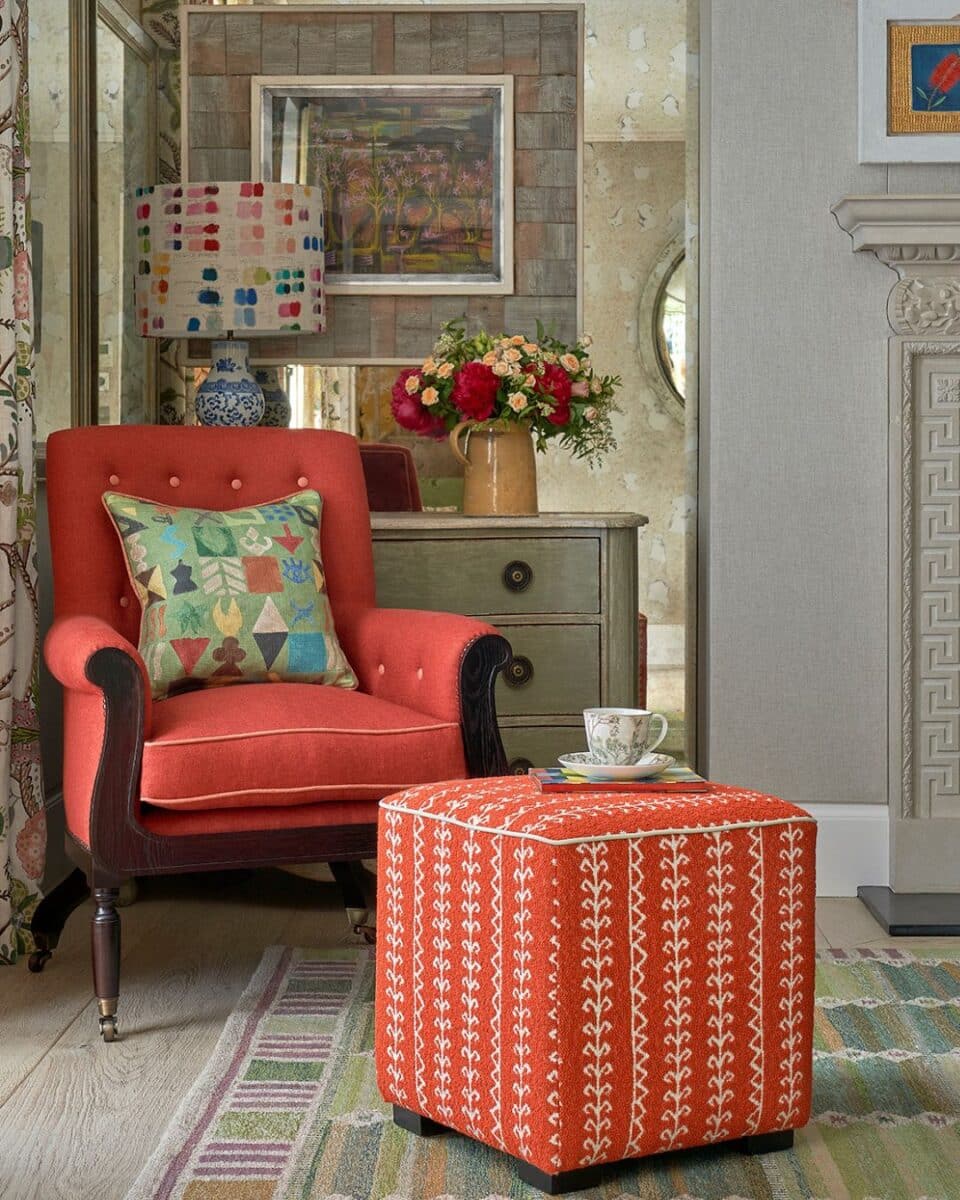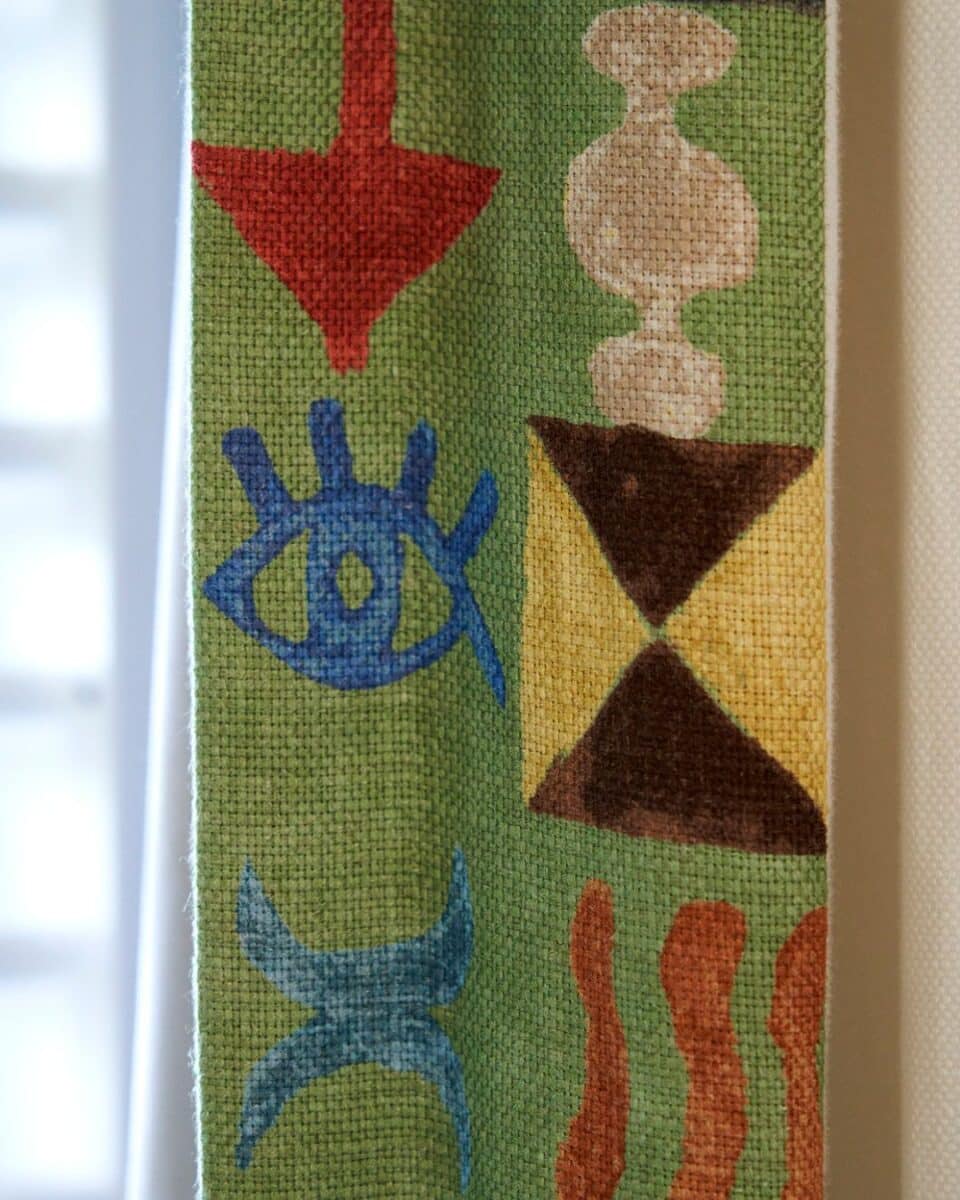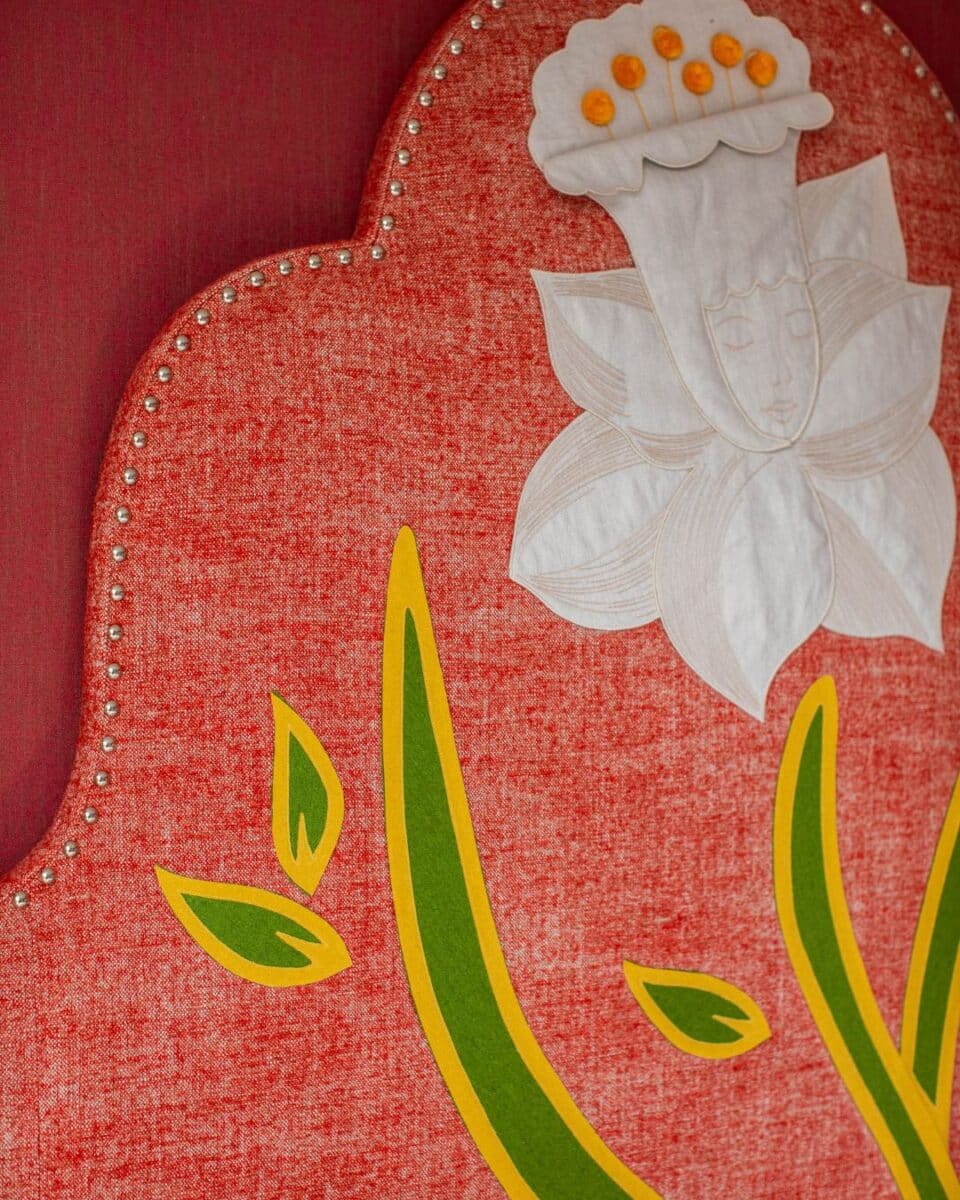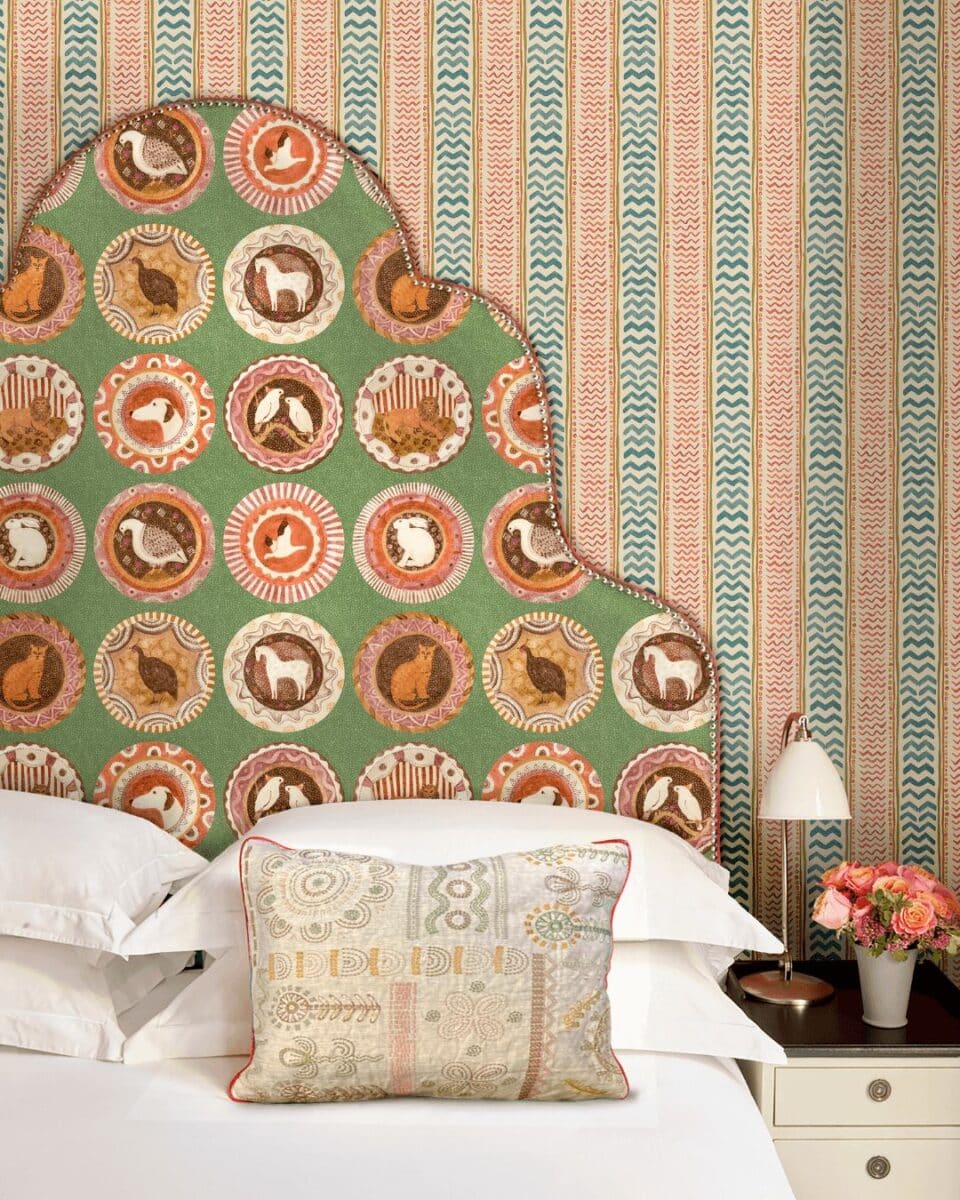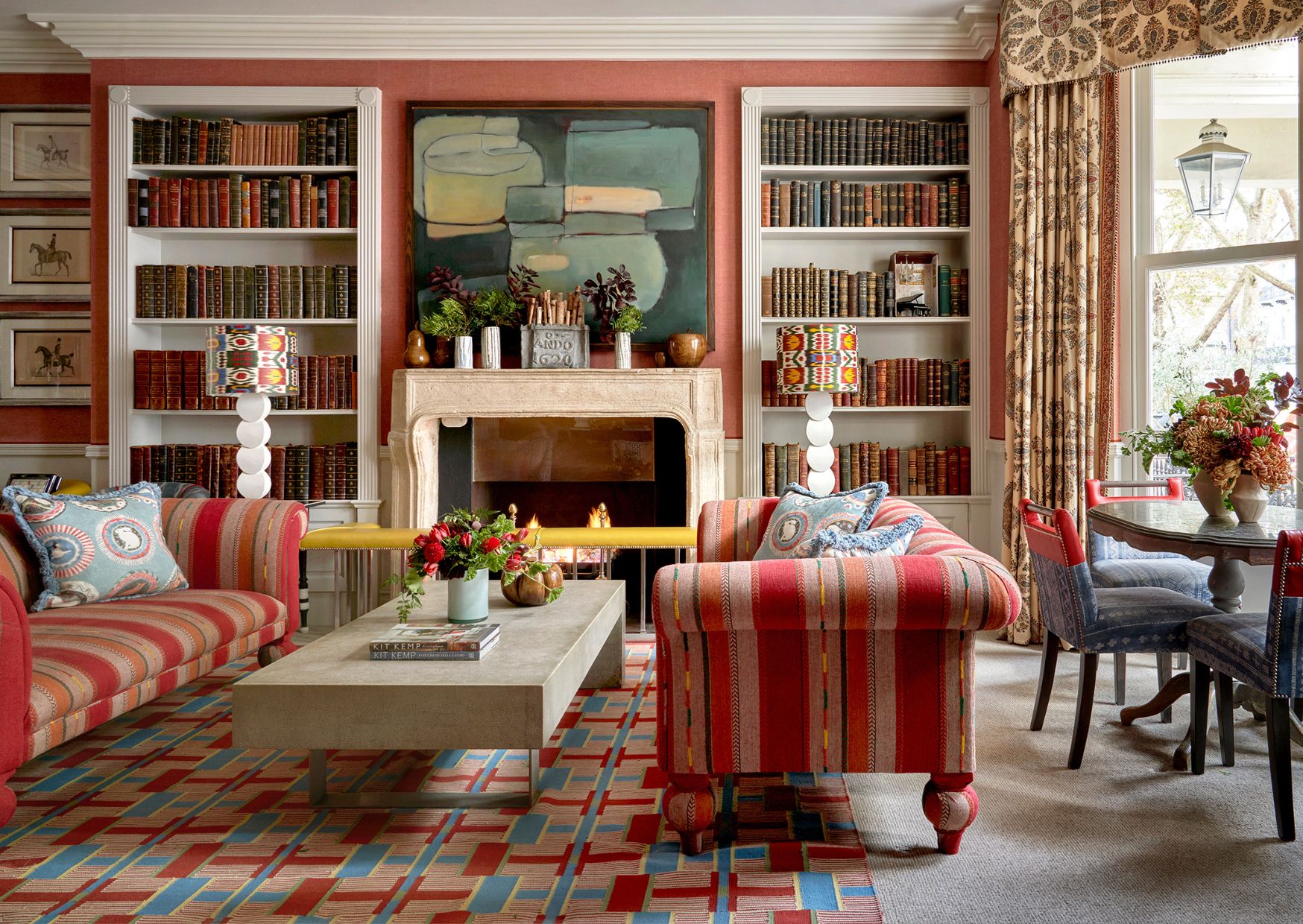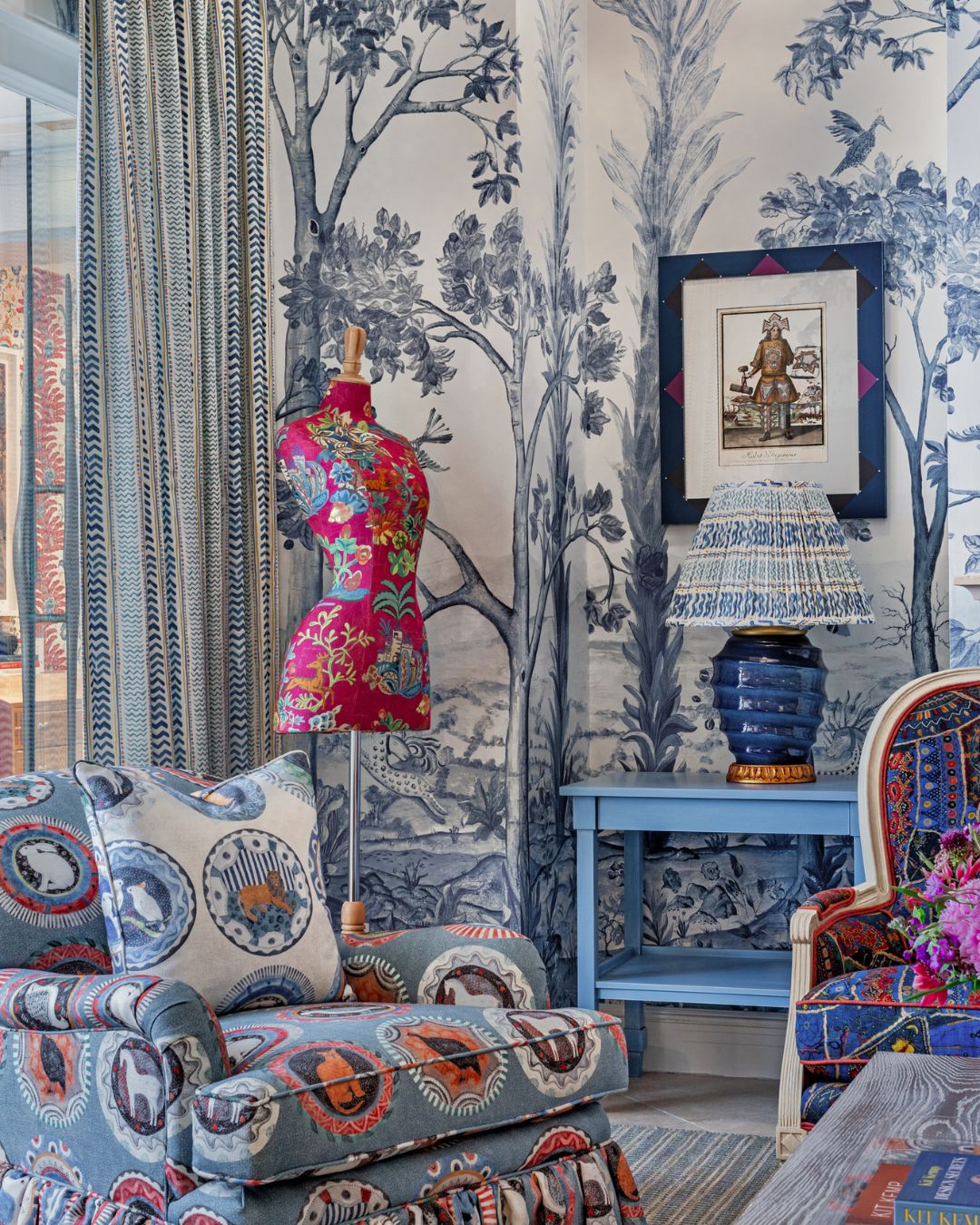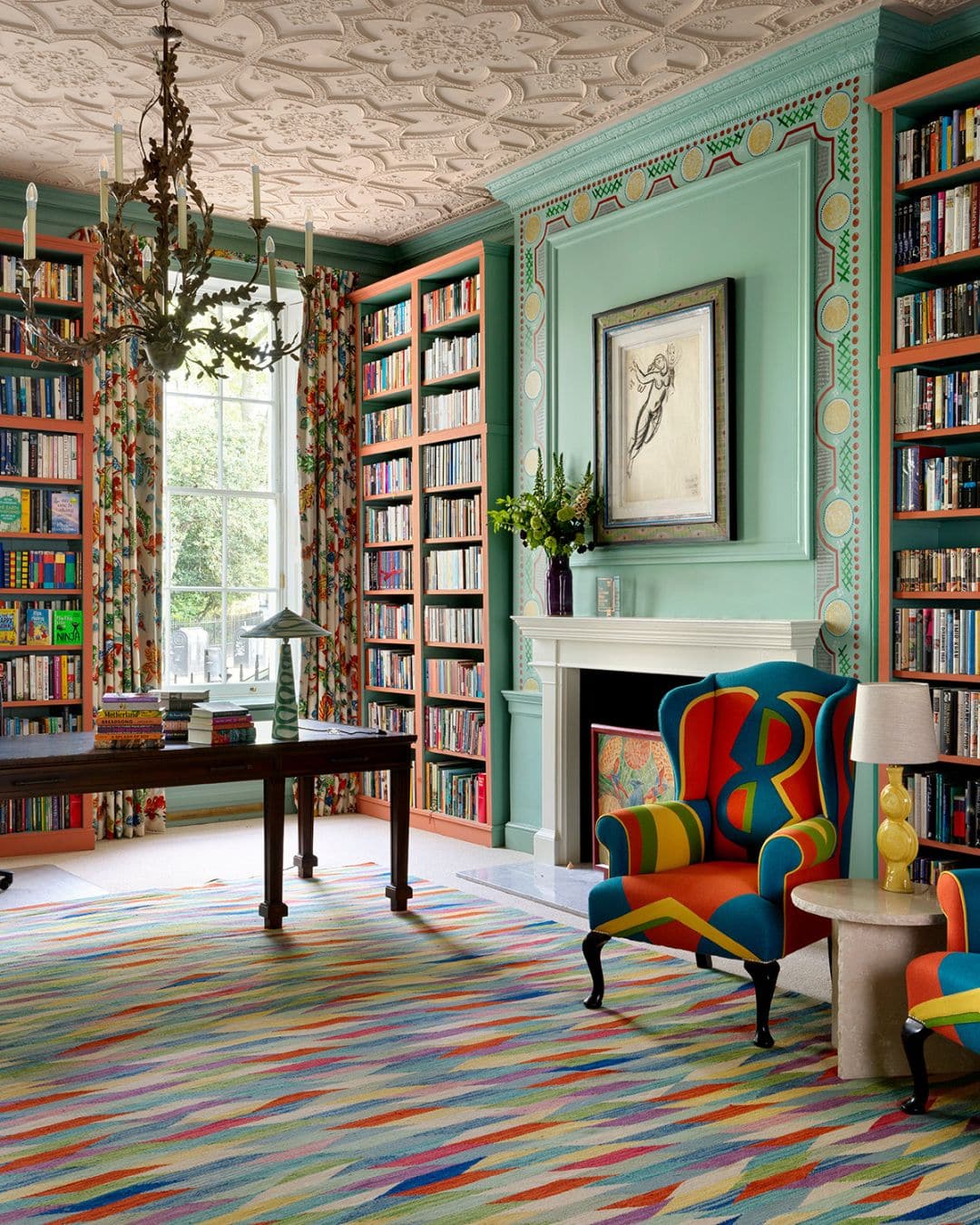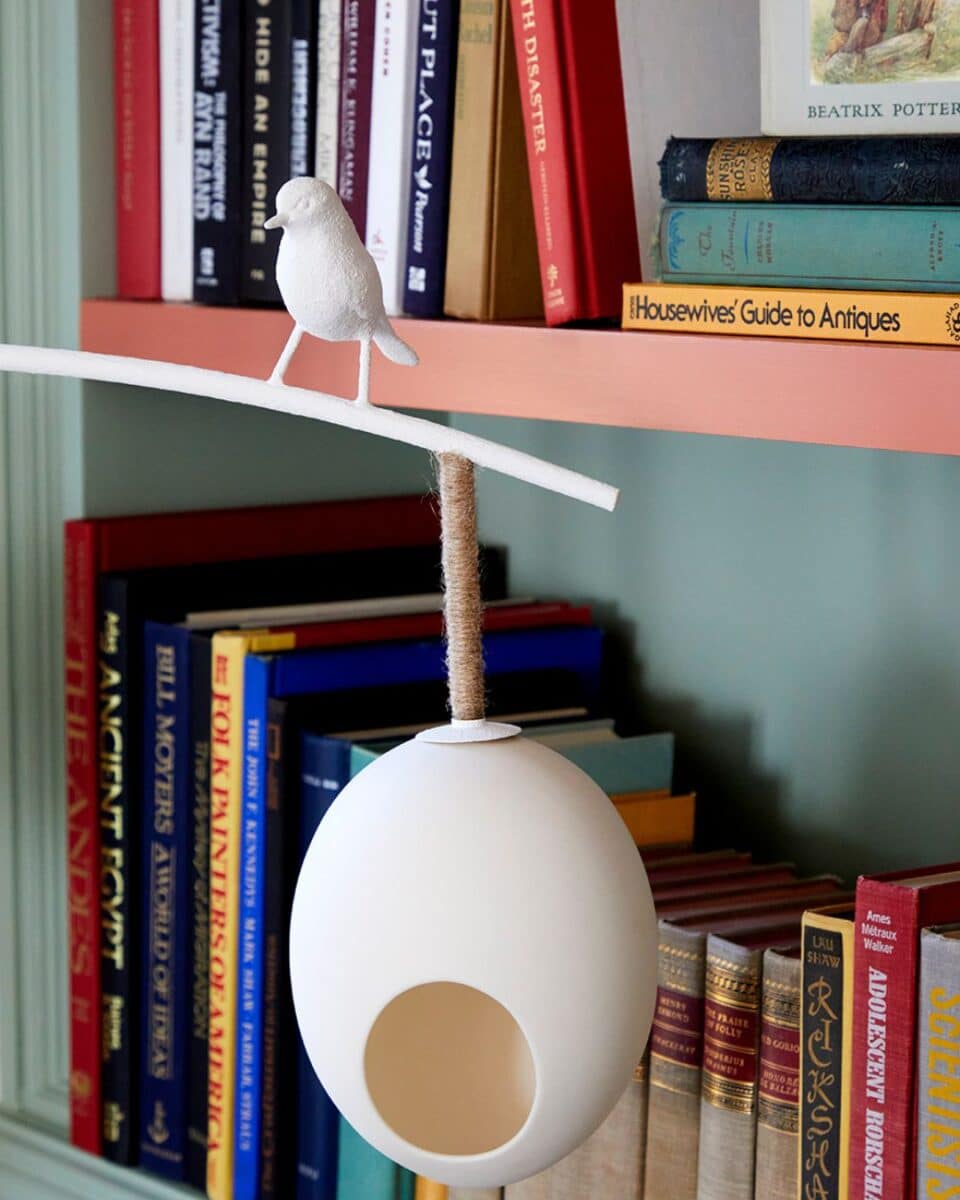At the heart of our design philosophy is a love for the handmade: the imperfect stitch, the brush of human touch, the sense that something has been lived in before it even enters the room. But handcrafted design is not stuck in the past. In fact, it is evolving more rapidly than ever and the intersection between folk traditions and modern innovation is where things become truly exciting.
Across our interiors, we have always drawn inspiration from the world’s great craft heritages: block-printed linens, appliqué, Welsh wool and English embroidery. These techniques bring not just texture but also story to a space, a reminder that every object has a maker and every thread a journey. Increasingly, we are seeing artisans and designers break open these traditions and reassemble them in playful, unexpected ways. Our Potato Print fabric designed for GP & J Baker is a feast of colour, pattern and texture with a contemporary twist.
Take the resurgence of quilting. No longer just a country comfort, it is being reimagined in sculptural headboards, vibrant wall art, and even upholstery, using bold, graphic layouts and modern palettes. Embroidery, too, is shedding its quaint reputation. Look out for two exciting new collections launching in September in partnership with Chelsea Textiles and Andrew Martin.
Rather than replicating the past, the future of handcrafted design lies in reinterpretation. Whether it is a hand-painted cabinet lined with contemporary paper or a classic stripe reworked in unexpected hues, it is about keeping things lively, layered and above all, human. You can explore this further in our recent post Fabric Focus: Bunty, which dives into our modern take on the traditional stripe.
Digital tools are also giving craftsmanship a new lease of life. Block-printed motifs are being scanned and transformed into large-scale wallpapers, or digitally scaled fabric designs are being hand-woven back into rugs using traditional techniques.
What excites us most is the way handcrafted design encourages collaboration. A ceramicist might partner with a lighting designer. A traditional weaver might work with a contemporary colourist. These meetings give rise to hybrid objects that feel completely fresh. You can explore some of our most exciting collaborations here.
The future of craft is not a return to the old ways. It is a celebration of them, yes, but also a chance to play, adapt and reimagine. Honouring the handmade does not mean freezing it in time; it means letting it evolve joyfully, colourfully and always with a human touch.
